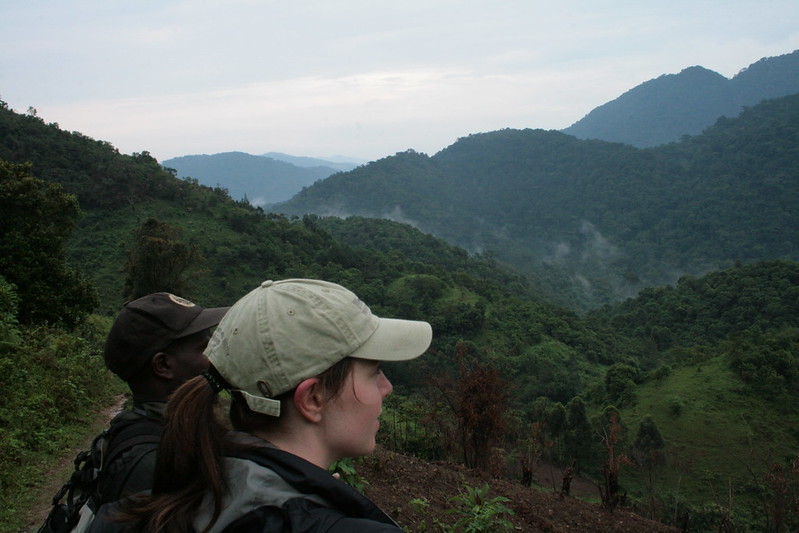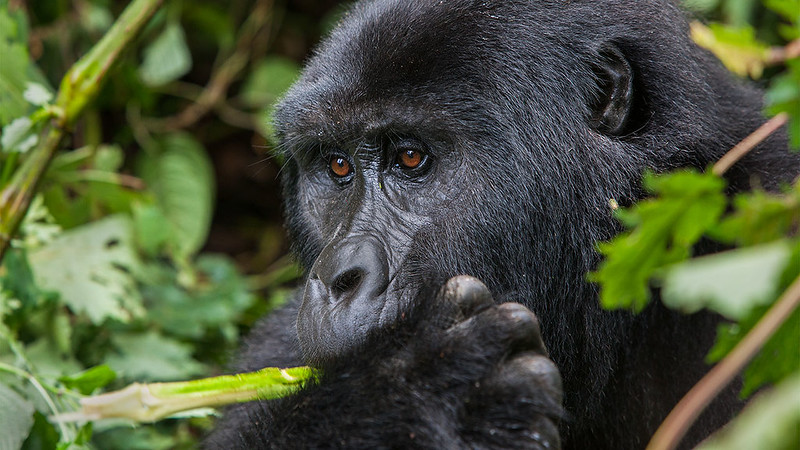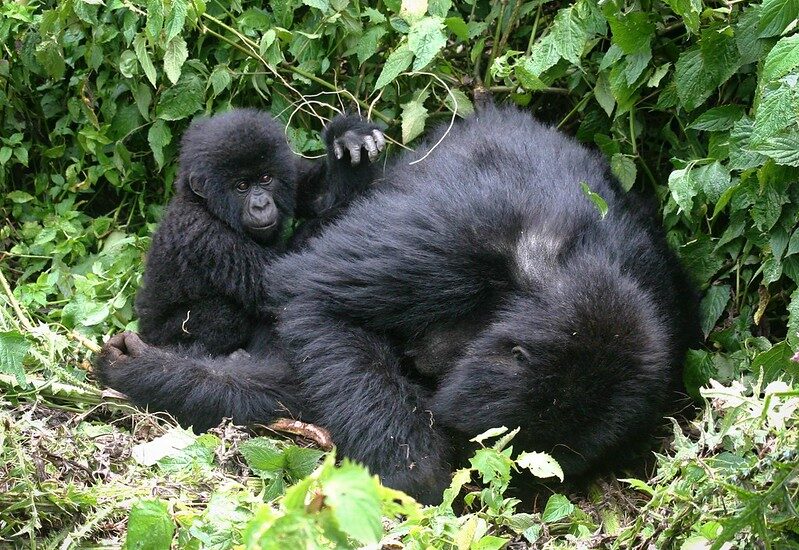Gorilla tracking permits for Nkuringo sector – Bwindi impenetrable National Park. You are currently sleeping…
What do Gorillas Eat?
What do Gorillas Eat?
It is estimated that gorillas share 98% of their DNA with humans and are the closest living relatives to humans after chimps. Yet, because gorillas live in the wild in dense woods, the typical issue is what gorillas eat/feed on.
Mountain gorillas are an endangered animal species that may be found in the deep tropical forest of Bwindi Impenetrable Forest National Park, Mgahinga National Park in southwestern Uganda, Volcanoes National Park in Rwanda, and Virunga National Park in the Democratic Republic of the Congo. These three African countries are located in East Africa and are famed for being home to mountain gorillas.
Mountain gorillas have the same DNA as humans and are known to be the largest and most powerful primate species on the planet. Mountain gorillas are divided into two gorilla species: east lowland gorillas and western low-land gorillas.
They are also divided into four categories: mountain gorillas, western lowland gorillas, eastern lowland gorillas, and cross-river gorillas. Mountain gorillas vary from other gorillas due to their body form and the habitat in which they dwell. The gorillas are called by their various habitats and physical shapes.
The endangered gorillas dwell in Africa’s deep woodland of Bwindi Impenetrable Forest, volcanoes national park, Mgahinga national park, and Virunga national park. Bwindi Impenetrable Forest National Park boasts the most gorillas, with over half of the world’s surviving population of mountain gorillas, and is a popular gorilla trekking destination in Uganda.
Bwindi is separated into four sectors, including Buhoma and Nkuringo. Rushaga and Ruhija have habituated gorilla families that are available to tourists for gorilla trekking; the park contains 18 habituated gorilla families, one of which may be walked at Mgahinga Gorilla National Park.
Volcanoes National Park is also home to the endangered mountain gorilla species; 14 habituated gorilla families are exposed to hikers, while the others are used for the study. Virunga is located in the Democratic Republic of the Congo and is home to eight habituated gorilla families that are ready for gorilla trekking.
These gorilla families are hiked on a regular basis. Therefore, to answer the question, what do gorillas eat? The dietary habits of gorillas vary depending on their natural habitat, where they reside, and the season or time of year.
Mountain gorillas are herbivores that eat mostly foliage, although they also eat other plants such as stems. Flowers, buds, and bark. Seeds, bamboo, shoots, fruits, vines, herbs, roots, leaves, shrubs, and young tree branches are all examples of edible plants.
They also eat insects such as ants, snails, caterpillars, and termites, but only in tiny quantities because they are high in protein. They also ingest ash and soil to help regulate their digestive system and neutralize any harmful plants they may have taken. The ash also adds minerals to their system, and they spend their entire life in the forest for refuge, food, and protection until they die.
Mountain gorillas live and migrate in groups of 2 to 40 individuals, with the Silverback as the family’s leader. The Silverback occupies the position of leadership in the family by watching after the family, protecting the family in case of danger, resolving disputes, determining the feeding place for the family, the time of feeding, and creating nests, among other things the family’s head should do for his family. The silverback gorilla leads the family until he is too old or dies, at which point another silverback can take over.
Mountain gorillas and lowland gorillas are slightly different in size; mountain gorillas are smaller than lowland gorillas. They mostly reside in tropical forests and feed on flora and plants that do not support fruit growth due to the high altitude that does not support fruit growth compared to the low land environment. Lowland gorillas are larger in stature and graze mostly on fruits, seeds, and tree trunks during the dry season when vegetation is scarce.
Mountain gorillas do not consume the entire vegetation in an area when feeding, but rather feed selectively, for example, they can consume stems from one plant, move to the next and eat the leaves, roots, and so on. This is done to allow the vegetation to re-grow because they will need food the next day. Every day, the gorillas wander from one location to another in search of food.
A gorilla’s life expectancy is 35 years or more, and female gorillas have a modest pace of reproduction, giving birth to 4-6 offspring during their lives. Women begin giving birth at the age of 10-12 years, and their gestation period lasts around 8.5 months.
The modest pace of births makes it difficult for the population to grow more quickly. A newborn gorilla can weigh up to 3-4 kgs and is solely fed breast milk until the age of five months. The moms feed them once every hour until they reach the age of four. Female gorillas weigh 113kg and stand five feet tall, however, male gorillas weigh 136kg to 196kg and stand 5 to 9 feet tall, making the male gorilla enormous, stronger, and larger than female gorillas.
When is the best time to see gorillas?
Mountain gorillas can be found in any of three East African countries: Bwindi Impenetrable Forest National Park in Uganda, Mgahinga National Park in Rwanda, and Virunga National Park in the Democratic Republic of the Congo.
All of these parks are available to tourists for gorilla trekking at any time of year; gorilla trekking is a year-round activity in all national parks. Well, this is true, but the best time to come is during the dry seasons when there is no rain and the ground is dry and less slippery because gorilla trekking includes traversing high hills in the forest, which necessitates that the ground be dry.
The dry season lasts from February to June, July to August, September to December, and January to February. During these months, there is little or no rain, the ground is dry, and the vegetation is dry, as opposed to the wet season, when the ground is muddy and slippery, making trekking through the forest difficult.
Gorillas communicate in the wild by making various sounds such as roars, yells, screams, growls, hooting, and chest-thumping. Gorillas speak with one another when they want to find food, when they are mating when they provide assistance to one another, and when they are furious. In the wild, gorillas survive entirely on foliage and plats.


